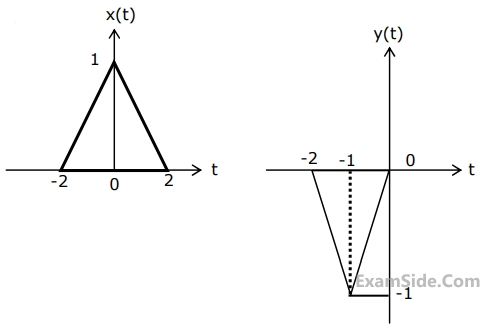1
GATE ECE 2008
MCQ (Single Correct Answer)
+2
-0.6
The signal x(t) is described by $$x\left( t \right) = \left\{ {\matrix{
{1\,\,\,for\,\, - 1 \le t \le + 1} \cr
{0\,\,\,\,\,\,\,\,\,\,\,\,\,\,otherwise} \cr
} } \right.$$
Two of the angular frequencies at which its Fourier transform becomes zero are
2
GATE ECE 2005
MCQ (Single Correct Answer)
+2
-0.6
For a signal x(t) the Fourier transform is X(f). Then the inverse Fourier transform of X(3f+2) is given by
3
GATE ECE 2004
MCQ (Single Correct Answer)
+2
-0.6
Let x(t) and y(t) (with Fourier transforms X(f) and Y(f) respectively) be related as shown in Fig.(1) & (2).


Then Y(f) is
4
GATE ECE 2000
MCQ (Single Correct Answer)
+2
-0.6
The Hilbert transform of $$\left[ {\cos \,{\omega _1}t + \,\sin {\omega _2}t\,} \right]$$ is
Questions Asked from Fourier Transform (Marks 2)
Number in Brackets after Paper Indicates No. of Questions
GATE ECE Subjects
Network Theory
Control Systems
Electronic Devices and VLSI
Analog Circuits
Digital Circuits
Microprocessors
Signals and Systems
Representation of Continuous Time Signal Fourier Series Fourier Transform Continuous Time Signal Laplace Transform Discrete Time Signal Fourier Series Fourier Transform Discrete Fourier Transform and Fast Fourier Transform Discrete Time Signal Z Transform Continuous Time Linear Invariant System Discrete Time Linear Time Invariant Systems Transmission of Signal Through Continuous Time LTI Systems Sampling Transmission of Signal Through Discrete Time Lti Systems Miscellaneous
Communications
Electromagnetics
General Aptitude